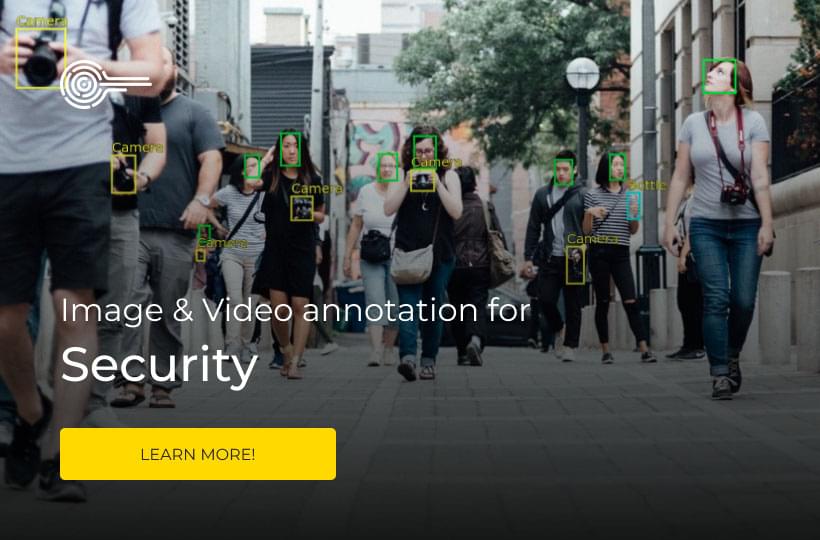Use of Computer Vision for Attention Detection and Emotional Analytics In Advertising

In the wake of digital transformations, businesses must keep pace with the demand for digital content and the ever-growing number of internet users. This is especially true considering that 62% of internet users in 2017 accessed digital video, according to a report by eMarketer. By the end of 2020, the number had risen to over 63.4%. Even with such a marginal change, the overall implication is that more and more consumers will spend most of their time watching video content.
A trend is beginning to emerge where marketers are constantly looking for ways to leverage the increasing number of internet users with access to faster internet connectivity.
A question that every digital advertiser seeks to answer is how to achieve the above in targeting prospective customers through digital video. One of the latest trends is using computer vision to enhance personalized advertising through attention detection and emotional tracking.
Artificial intelligence advancements have seen computer vision progress to real-time tracking of human behaviours through live video. For instance, you've probably already come across this in everyday activities, such as Facebook's visual identification of users and data annotation for self-driving cars.
In addition, the use of computer vision technology in advertising in the form of attribution for formats seen in outdoor signage is also growing popular.

Outdoor signage can have the ability to track a viewer's impressions by detecting and recording the number of people who walked past an ad and those who viewed the ad. This is possible thanks to attention detection.
Today's article aims to give marketers a glimpse of how computer vision can enhance their advertising campaigns. Read further to learn how quickly AI-powered data collection and segmentation help identify and segment audiences and build personalised ads for improved ad performance.
What is computer vision video annotation as used in advertising?
Computer vision can be described as an interdisciplinary technology that focuses on how computers can be made smart by gaining a detailed understanding of digital images and videos. In other words, it is the ability of computers to 'see' and automate tasks usually done by the human visual system.
With the aid of AI-powered video and image annotation machine learning, systems of computers can accumulate knowledge independently. Moreover, through machine learning, computer programs can adapt and change new data.
Due to its potential use in greater ad targeting, computer vision is heralded as the next marketing phase. This is especially true given its ability to analyse how consumers respond to adverts in addition to gleaning social media images for user data.
These advancements can provide useful insights into the behaviour of prospective customers, thus enabling you to formulate and target your ads.
Research shows that video marketing that is powered by artificial intelligence has the potential to assist advertisers in coming up with more personalised videos for targeting the relevant audience. Viewers' reactions to video content advertisements, including attention time, can be obtained thanks to facial recognition.

Enabled by machine learning, computer vision video annotation helps marketers to:
- Know and categorise content that generates the greatest viewer reactions
- Reduce the time it takes to design and deploy effective video campaigns
- Strategically target specific audiences
- Conduct and analyse reaction surveys of specific video content on a large scale
- Garner useful insights on their potential customers' preferences
Attention Detection and Emotional Analytic Through Eye Tracking
Computer vision helps to analyse consumer actions, such as attention to ads through eye tracking. Through this technology, marketers can analyse user ad responses. The data obtained can be used by advertisers to improve their ad campaigns.
This attention detection technology is already in use, as seen in shopper labs. Retail mockups can record a customer's point of reference by noting the eye movement across a row of goods. From this, marketers can know the branding element which attracts, distracts, or drives the customer away.
Moreover, through computers embedded with fixed eye trackers, you can determine the viewer's reaction and, more importantly, how a user's directional scan changes when subtle adjustments are made to an image on the screen.
These adjustments form the basis for tweaking an image or video used for advertising purposes. Such attention detection technology advancements lead to better ecommerce websites and the rising influence of digital content marketing.
Emotional Analytics
Emotions have been known to have a profound effect on consumer behaviour. Computer vision works to enhance target marketing through emotional analytics by rating facial expressions.
Emotional analytics can achieve affect-aware computing by combining image annotation and video annotation computer vision techniques. This form of computing allows computers to detect, analyse, comprehend and react to human emotions automatically.
Through affect-aware computing, traditional market research techniques such as interviews can be escalated and automated. This is done by enabling algorithms to process a ton of data from digital market campaigns and interactions on social media. The end product is actionable insights that marketers can use to increase customer satisfaction.
One such example of the use of this tech can be seen in Unruly's partnership with Moodagent, Nielsen, and Affectiva to bring emotional intelligence into advertising. The app can compare customers' responses to products and determine the products that evoke the strongest consumer emotions. From this, advertisers can maximise their ads' emotional and commercial impacts.
Additional Computer Vision Benefits to Advertisers
Experts believe computer vision will go beyond optimising attention detention and emotional analytics. The following are some of the additional ways AI-powered computer vision helps advertisers to achieve their goals:
- Original content generation using Generative Adversarial Networks such as pose-guided person image generation.
- Brand object recognition to enable tracking of brand popularity and change in customer perception over time.
- Product discovery through visual discovery by image labelling and tagging.
- Optimising conversion rate by using deep learning image labelling to recognise qualities of a good image.
- Facial recognition helps to deliver a personalised customer experience by detecting loyal customers.

Conclusion
Although computer vision is yet to go viral, it won't be long before it goes mainstream. The progress witnessed in the advancements of artificial intelligence in computer vision applications has been remarkable over the past few years. The technology will allow marketers to explore the benefits of attention detection and emotional intelligence to streamline their digital marketing campaigns.
Understanding your consumers' attention and emotions is slowly gaining momentum as a priority in business. Using emotion detection technology, brands can analyse consumer information to optimise their digital marketing strategies.
Though still in its early stages of development and adoption, we can expect new and exciting innovative uses of computer vision in digital advertising as the technology matures.



